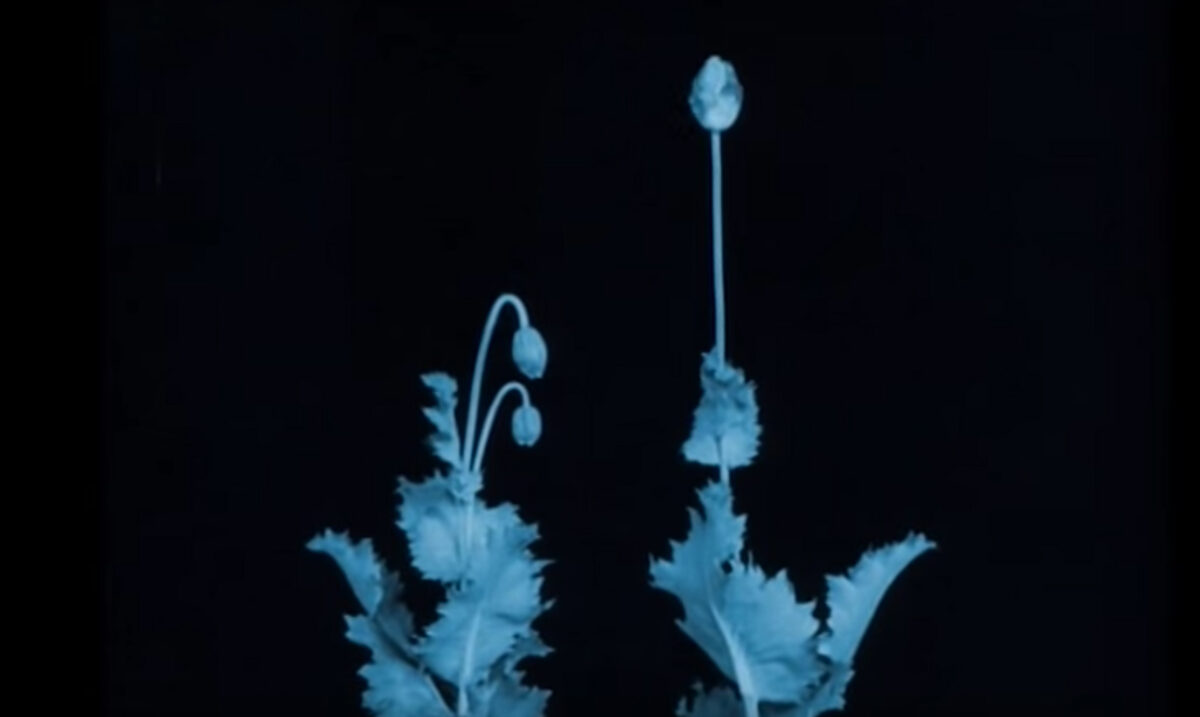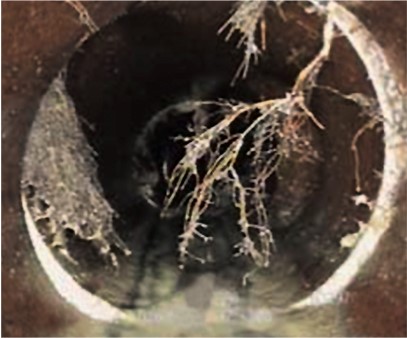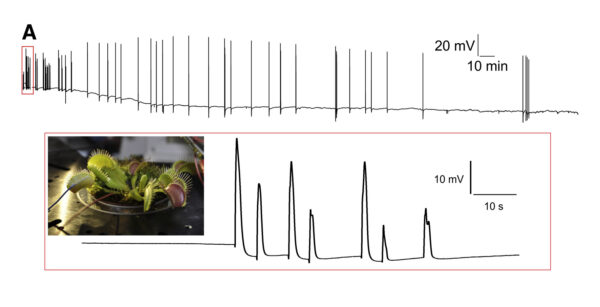Vibrant Bodies
Vibrant Bodies, Electric Beings
The grasshopper lands on a soft pink island and briefly looks around. The grasshopper’s skittish legs bump into a flexible, slender spike, but no harm comes. It bumps into another, then another, and another. Suddenly, the sky falls on its head. A second pink pad has closed over it, and fast. The spikes were a trigger. The grasshopper finds itself in a soft cage. It can see out through interlocking teeth at the seam where the two pink pads have clasped together, but it cannot leave. It wriggles violently to free itself, to no avail. Its thrashing body collides with the soft spikes inside the trap, again and again, setting off another process. Enzymes begin to fill the chamber. The grasshopper will soon be digested alive. The Venus flytrap gets its meal of blood.
Fear of carnivorous plants feels only natural. The Venus flytrap is famous for the creaturely impression it gives when it closes its trap, which was hanging toothily open, like a mouth, just a moment before. (In reality, the trap is a leaf with a hinge.) It eats what we might call “real food”—insects, such as flies and grasshoppers—in addition to the nearly magical plant habit of eating light, by which process the plant kingdom has created every molecule of sugar that has ever passed through our bodies, as well as the oxygen we breathe, quite literally enabling our existence. Still, a meal of meat is more interesting.
Though this Venus flytrap is merely eating, like any of us do, the scene elicits a certain delicious trepidation. A role has been dramatically reversed. How has a plant fatally outwitted an animal? Of course, this happens all the time in slower ways—plants constantly outwit animals, tricking insects into protecting them or helping them to reproduce[1]—but we mammals are temporally biased in one direction. We love a quick kill.
A meal of blood is distinctly vampiric. Menacing. In the film Nosferatu (1922), the scientist Professor Bulwer watches a flytrap capturing a fly. Its murderous maw snaps shut, and a parallel is drawn to the vampire’s kills. The whole notion of a carnivorous plant flips a reliable power dynamic on its head: We eat plants. What if plants could eat us?
Venus flytraps are also the stars of the rapid-moving plants, doing several things that plants are not meant to do, at least not in the narrative we have draped upon the entire plant kingdom. We insist on believing that plants are slow, but humans just exist on a different temporal plane. We don’t have the patience to see their daily movements, like the way a young cucumber plant curls and uncurls its tendrils and sways back and forth several times a day, something that looks almost dancelike under time-lapse. Plants are in constant motion, yet always frozen in the moment of our regard; slowness is of course relative to the length of observation. A forty-year-old tree will be much, much taller than a forty-year-old man. A bean plant can grow to the height of a ten-year-old child in a matter of days. A kudzu vine can engulf a car in the space of a week. Not so slow after all.
We can be jarred out of this assumption of slowness in ways that produce what scholar Janet Janzen calls an “empathetic relation to plants,” as in Max Reichmann’s film Das Blumenwunder (The Miracle of Flowers, 1926), where plants are revealed under time-lapse swaying their limbs and opening their blossoms with graceful alacrity. Spliced alongside them, human dancers move in plant-like ways; the film uses kinetic images to bridge the gap between plant and human, a distance our language lacks the words to span.[2] This could be seen as a sort of plant utopianism, suggesting that biology is consistent and consistent across taxa—we all might have a lot more in common than we think.

But more often than not, this uncanny resonance yet wide gulf between human and plant is refracted through the lens of horror. The Venus flytrap lends itself naturally to this genre.
Fear of a sentient plant, like all phobias, is grounded in a fear of the unknown. At the turn of the twentieth century, the European intellectual class was operating under the same assumption as always, that plants were utterly inactive. They were rocks that happened to grow. The possibility that plants are not passive, inert organisms, as suggested by the scala naturae upon which European ideology is built, but rather dynamic, behaving organisms with their own motivations and predilections was only beginning to come to light as the modernist period dawned. Science at the time ballooned with interest in the inner lives of plants. Toward the end of his life, Charles Darwin published several books on the habits and motivations of plants, noting how they moved with apparent intent and appeared to respond in real-time to any stimuli or obstacles he placed before them.[3] As more and more “exotic” plant and fruit species were being imported into Europe from the far corners of the imperialized globe, the first glimmers of the idea of invasive species arose. That organisms from elsewhere might invade and pose a threat to an existing biotic order squared neatly with the increasing drumbeat of xenophobia on the Continent. The plant as “other” took on new meaning.

At the same time, modernist design was producing spaces markedly free from the chaos of botanical life. The modernist home was one of minimalist interiors characterized by clean angles often made in cast concrete. It makes sense that these interiors tended to include a single cactus, if any plants at all—slow growing, self-contained, vertically disciplined, cacti are decidedly not sprawling in form. Many other plants are, first of all, geniuses at breaking through concrete, probing for pores to infiltrate, and creating fissures by force. Plants invade our built environments, breaking our clean lines. The tendrils of a probing, perambulating, octopus-like plant would be a clear threat to this minimalist form.
The daily invasion of human infrastructure by plants is as banal as it is surprising. It pervades the corners of our lives to this day. Shoots and roots can push straight through concrete. Tree roots can “hear” water running in sealed pipes and seek it out, bursting the pipes in the process. This likely accounts for more than half of all blocked sewer lines.[4] Germany, for example, spends an estimated €28.4 million per year repairing root-burst pipes.[5]

Meanwhile, if a house in a temperate climate is left unattended even for a year or two, plants will infiltrate. Green shoots will sprout from the grout between tiles and shingles. Dandelions and ferns will begin to crumble the edges of paving stones on the balcony. Ten years, and the roof will be host to a thriving botanical community. Fifteen, and the house is no longer yours; it is too far gone. It may be condemned. It belongs to the plants now. In a tropical climate, where the rate of photosynthesis is often faster, this happens much quicker.
Even just a single tendril of green flesh rupturing concrete begins to split open our understanding of plants as sessile, squishable, inert. A soft thing without eyes or a mouth that applies sustained pressure to our rigid boundaries, the only thing between us and the dirt, and it wins the fight? That’s unsettling to a sense of order bent on the supremacy of human ingenuity. The possibility that we are not in charge flicks through the mind. Power is a matter of perspective. Perhaps then, minimalism in the modernist period is the illusion of control, and plants are the corrective.

Yet this need not be a violence, or a source of horror. It might be more fruitful as a humbling reminder. I recently visited the Colosseum in Rome. It was my second time, so my awe at the structure itself was mellowed enough to notice other, smaller things. I gazed from a railed viewing platform over the mazelike passageways of the ground floor some yards below, where enslaved people once crouched beneath a long-gone stage, lifting cages of wild animals and decorative trees through trap doors to the gladiator deck above. All that’s left are the labyrinthine corridor walls. I stood with ten or twenty other tourists. No one was allowed to enter the structures below us. As our guide spoke, I stared at the many green things attached to the ancient walls. They’d breached the rules of no entry to flagrantly colonize the pocked limestones. In nearly every pore, a small plant merrily grew. Tiny yellow flowers on delicate stems poked out between chartreuse tufts of moss.
To the plants, the Colosseum was merely a suitable substrate. From their perspective, the few hundred-thousand years that humans have existed are immaterial, as are monuments to their ingenuity. Plants have been photosynthesizing for at least two billion years longer than Homo sapiens have breathed.
Fear of the sentient plant comes up over and over in contemporary media. The root of fear is, relentlessly and predictably, the unknown. But there is a layer beyond the unknown that discomfits us more: the sense of something we know but cannot name. A lurking feeling that there is something more going on, some possibility unaccounted for by the culture.
Writing often tries to get at this discrepancy: writers draw word perimeters around feelings for which there is no language. However, even their best efforts remain merely a symbol for something truer. The Brazilian author Clarice Lispector often wrote about her desire to finally write right into meaning, to pierce the center of it and pull out a throbbing heart. She wanted to unite “the symbol of the thing in the thing itself.”
Maybe the reason it is impossible for us to unite “the symbol of the thing in the thing itself” is due to the gaps in our systems of meaning: We don’t yet see how the world truly fits together. We don’t yet feel the unity of complete knowledge, even of the basics. We don’t know whether or not plants are “alive” in the way that we think of ourselves as alive—alive to each other and the surrounding world. Would we be better able to ascribe true meaning to language if we knew that? If we could fill the gaps? A feeling of under-understanding pervades our sense of the natural world. We have an assortment of disconnected facts: plants grow, we think. There is a roughness to our knowledge and tattered ends to our vocabulary. It makes sense that our language fails to truly convey the sensation of living we feel in our bodies, the realness of it all, which we perceive but cannot name.
But back to the Venus flytrap. Just as electric lighting began to transform modern lives around the turn of the twentieth century, the study of biological electricity was transforming our understanding of human and animal life. We were, each of us, animated by this nearly mystical ingredient. And, as science was discovering, so too were Venus flytraps.
Electricity is a wily force. It in itself is not alive, but it is very often the best sign of life. It is a proxy for aliveness—or it may be aliveness itself. Electricity is entangled in every aspect of our living. It is behind our ability to move, think, breathe. It does not have a pulse, but a pulse has it; or, rather, electricity is the reason for the pulse at all. What to call something that on its own is not quite alive, but surely not inert either? The theorist Jane Bennet calls it vibrancy. That appeals to me. Electricity has its own vibrancy. It makes us happen.
Electricity makes plants happen too. From a certain perspective, a plant is a sack for water—or, more specifically, a skin-like membrane of cells inflated by a coursing watery liquid. (Same with humans, by the way.) This arrangement makes plants extremely electrically conductive. Electrical pulses move through the plant body very fast. But could plants be using this electricity to understand and respond to the world, as we do? To move, grow, send messages to their distant parts? Whereas most electrical impulses in the human body are routed through our brains and sent back out as information, plants have no such recourse. So how in the world would electricity be a means of signaling, making meaning out of inputs, without a brain? Scientists, right now, are racing to answer that question. What they discover will almost certainly be something entirely new—a new system by which a creature can organize its myriad parts into a cohesive whole, which drags us ever farther from the brain supremacy humans operate under today.
Touch the skin of your cheek. Feel that touch, both in your finger and its landing site on your face. That feeling is brought to you by electricity, an elaborate chain reaction emanating from the cells on your fingertip and on your cheek, all the way to your brain and back again. In the human body, electricity works like this: Our cells, when at rest, are ever so slightly negatively charged. Positively charged elements—sodium, magnesium, potassium, and calcium ions—are afloat in the plasma between these cells. These are your electrolytes. When touched, cells open channels in their membranes that allow these ions to pass through them. Think of the sluice gates in canals that let water in and out. Suddenly, with the influx of ions, the cell’s charge flips from negative to positive, producing a burst of electricity known as an action potential. This sudden burst also triggers the gates in the neighboring cells to open and let ions pass through, electrifying those cells in turn. This chain reaction travels fast, sending information via the electric current moving from the bestirred cells in your finger and cheek to your brain and back again. Almost all our cells are capable of generating electricity. Muscles are electrically active every moment they are contracting and releasing; it is electricity that makes this movement possible. The same holds true for the smooth muscle around our veins, which contracts and releases to keep the blood flowing through our body. Our brains, of course, are fantastically electrical, awakening us to the caress of our own cheek before we have time to wonder what the touch feels like.
But what happens when electricity diminishes? When humans are put under general anesthesia, they stop responding to touch. Touching an anesthetized person’s body—or cutting them open with a scalpel—will not produce the same flurry of electrical bursts it would under normal circumstances. The drugs interfere with our action potentials. Similarly, when researchers put Venus flytraps under general anesthesia—by placing them in glass cases and suffusing the air inside with diethyl ether—the plants also stop reacting to touch. Their traps don’t snap shut, no matter how many trigger spikes are flicked. The researchers who first carried out this experiment also found that within fifteen minutes of removing the ether, the traps could close as normal.[6]
The mystery of plant electricity calls to mind other mysteries: bodily, human ones. The wiring of our own electric brains is so circuitous that no map has yet been made of every pathway. It also calls to mind the mystery of the mechanism by which anesthesia so blithely turns down the dial of our circuitry without snuffing us out completely. We still don’t know how anesthesia works, but we do know that in the human brain, it appears to change the pattern in which electrical impulses flow. When a person goes under anesthesia, their brain waves decrease, resulting in a general dimming of activity. The flow of information, it seems, slows down or flickers out. For some scholars, the presence of consciousness is evident mainly in its inverse—in one’s ability to be knocked unconscious.
One of the earliest attempts to study electricity in plants was made in the 1900s in Kolkata, India, by biologist, physicist, botanist, and science-fiction writer Jagadish Chandra Bose. Just as electricity began to illuminate the modern interior, Bose began experiments to illuminate the way electricity functions inside bodies. Bose is best known as the pioneer of microwave technology and one of the first inventors of radio. Born in 1858 in Kolkata, he was educated in England and published an early paper on wireless transmission in the Proceedings of the National Academy of Sciences, which remains one of the most prestigious scientific journals today. He was knighted in 1917 and elected a Fellow of the Royal Society in 1920. He was also the first Indian to hold a U.S. patent. But Bose was also a plant enthusiast.
In the years following his major breakthroughs with microwaves, Bose began experiments on plants. He attached electric probes to various vegetables and claimed to record a “death spasm” in the form of a spike in electrical activity. He hooked a cabbage up to a voltmeter in front of the playwright George Bernard Shaw, who was reportedly horrified to witness the electrical “convulsions” of the cabbage as it was dropped in boiling water. Shaw, it must be said, was a vegetarian.
Bose also observed how Venus flytraps produced an electrical impulse just before their trap closed. English scientist John Burdon-Sanderson first recorded electrical pulses in Venus flytraps in 1873. Every time a fly landed on the plant’s trap, the galvanometer needle swung. But Bose went deeper, looking at the electrical response within individual plant cells with a microelectrode recording system he designed himself, several years before scientists took the first microelectrode readings of single neurons in animals. He watched as the voltage in individual plant cells changed when they were poked or otherwise bothered, clearly responding to touch. In 1928, some years later, he wrote about “plant nerves” and suggested they behaved like synapses.[7] By then, the earliest explanations of the animal nervous system were being published, although the word “neuron” had yet to be coined.
Plants, Bose decided, must have nervous systems. He was convinced that their electrical impulses were responsible for the control of most plant functions, like growth, photosynthesis, movement, and response to anything the environment threw their way—light, heat, exposure to toxins. “The results of the investigation which I have carried out for the last quarter of a century establish the generalization that the physiological mechanism of the plant is identical with that of the animal,”[8] Bose wrote.
Now, this isn’t entirely true—plant cells are different from animal cells, and plants simply do not have synapses. But Bose called his findings a “generalization,” and if we truly are generalizing, it seems he was right. Plant and animal bodies may be operating on similar basic principles, electrically speaking.
More than a century after Bose, plant electricity is now blooming into a substantial field of its own. Scientists are resurrecting some of that early electricity research but with better tools. Plants, it turns out, are remarkably electrical beings—measurable bursts of electricity called action potentials accompany nearly everything they do, much like the ones that accompany each beat of the human heart. They also use several of the same neurotransmitters as we do to move information through their bodies. Some argue that this is evidence enough to conclude that plants have nervous systems. They contend that the definition of a nervous system should be expanded to include the branching system of veins filled with electrically conductive fluid inside the plant body.[9] If it walks like a duck and quacks like a duck, perhaps we ought to call it a duck.
The case of the Venus flytrap is being revisited today. In 2016, Rainer Hedrich, Jennifer Böhm, and Sönke Scherzer, all researchers at the University of Würzburg, attached electrodes to Venus flytraps. Inside the traps of each plant bristle several flexible spikes; the team observed that when a spike was stimulated, a burst of electricity—an action potential—moved through the cells and registered clearly as an action potential on their screen, just as Burdon-Sanderson had observed in 1873. But the German team went further, discovering that Venus flytraps use their spikes to count. After the first hair is flicked, the plant waits twenty seconds. If a second hair is flicked before twenty seconds is up, then bam, the trap shuts. For a short time at least, the flytrap seems to store the memory of the first triggered hair and waits for the next. If the hairs continue to be disturbed five times in quick succession, enzymes begin to flow into the trap, and digestion starts. This is a brilliant strategy; the trap makes sure it bothers to close only on live, wriggling prey and not, say, on a falling leaf. In this way, the hairs are mechanosensory switches: they trigger an electrical burst. The researchers confirmed this by zapping the plants with doses of electricity without touching their hairs at all. When zapped twice in twenty seconds, the trap closed every time. Zapped five times, digestion began as normal. This is the clearest example we have of touch-sensing in plants where we know for sure that electricity is causing the response. The discovery is sparking conversations within botany and philosophy circles about what it means for a plant to have the capacity to count and, in counting, the implicit capacity for memory.[10]

Many mysteries remain about nervous system-like signaling in all other plants (and within all the other parts of a Venus flytrap). How does an electrical signal initiated in one place on a plant cause a change in an entirely other place? And how, without a brain, does that signal get translated into action? No one as yet knows. This is where our imaginations bottom out. What would it mean if plants have a nervous system of sorts but not a brain? It is hard to imagine a living, responsive creature that does not rely on a centralized processing system. Several researchers have put forward the idea that plants have a sort of network intelligence, a decentralized processing system capable of cohesive action. This is still a nascent field of study, which is difficult to wrap one’s mind around. Plants already occupy “the margin of the margin, the zone of absolute obscurity,” as philosopher Michael Marder has written.[11] They are the ultimate other; our evolutionary branches departed from one another so long ago as to make us evolutionarily closer to fungi than we are to plants. And yet our systems and theirs bear certain resemblances. The signature of evolution’s ingenuity echoes through both our bodies.
Plants, of course, do not have brains, or ears, or skin—at least not in the specific animal meaning that these words conjure up. Yet they do make decisions, hear, and feel; as such, I find it helpful to use these words as a shorthand because they at least produce the right symbols in our minds. After all, our language is limited. In his book Alien Phenomenology, philosopher Ian Bogost contemplates how we can possibly imagine what it is like to be a non-human thing. Of course, we can never accurately describe the experience of anyone but ourselves, and perhaps, least of all, that of non-humans. “In a literal sense,” writes Bogost, “the only way to perform alien phenomenology is by analogy.”[12] The analogue we have at hand is ourselves. Yet perhaps acknowledging the way plant bodies process information by using words like “nervous system” is not merely an analogy. Perhaps it is a more literal choice: the structure of our biologies may not be so far apart. Those of us under the influence of classical European ideology may have simply gotten it wrong so far.
Perhaps it need not be this way. Indeed, not all cultures find the idea of plant intelligence difficult to comprehend. Virtually all Indigenous peoples around the world have a more intimate relationship to and recognition of the sentience of plants, despite the biological mysteries it presents. Many cultures ascribe personhood to plants, humans being just one type of person. Human-persons and plant-persons are often literally related: the Canela, a group of Indigenous peoples in Brazil, include plants in their family structures.[13] Gardeners are parents; beans and squash their children. In Plants Have So Much to Give Us, All We Have to Do Is Ask, a collection of traditional Anishinaabe teachings about plants, Mary Siisip Geniusz writes that the primacy of plants is central to the understanding of her Great Lakes region tribe. Plants are the world’s “second brothers,” created just after the “elder brother” forces of wind, rock, rain, snow, and thunder. Plants depend on the elder brothers for life while supporting all life created after them. Animals are “third brothers,” reliant on both the elements and plants. Humanity is the “youngest brother,” the most recently created of all beings. Humans alone need all three of the other brothers to survive at all. This is quite an inversion of what those of us influenced primarily by the European legacy have been taught to believe. “Humans are not the lords of this earth,” writes Geniusz. “We are the babies of this family of ours. We are the weakest because we are the most dependent.”[14]
- ↑ One example is the bittersweet nightshade, a plant in the same genus as tomatoes, potatoes, and tobacco. The plant secretes a sugary nectar in order to conscript ants as bodyguards. The ants, hooked on the sticky syrup the plant oozes to entice them, dutifully pluck off the flea beetle larvae that cling to the plant’s stem. The ants must act quickly, before the wriggling larvae bore themselves into the bittersweet’s body and wreak havoc. The ants march the larvae deep into their nest, and the larvae are never seen again. See Tobias Lortzing et al., “Extrafloral nectar secretion from wounds of Solanum dulcamara,” Nature Plants 2, no. 5 (2016): 6–12.
- ↑ Janet Janzen, Media, Modernity and Dynamic Plants in Early 20th Century German Culture, Critical Plant Studies 2 (Leiden: Brill, 2016). Online: www.brill.com/view/title/32980.
- ↑ In 1880, Charles Darwin published The Power of Movement in Plants. It was filled with experiments on plant roots, conducted alongside his son Francis. The book’s conclusion was startling: Darwin observed that the tip of a plant’s root is covered with an inconspicuous cuticle that appeared to be a command center. Poke it, or singe it, and the root grows away from the offending jab. Place moist and dry soil on either side of it, and it swerves toward the moisture. Put it between a rock and soft clay, and it moves away from the rock before it even hits it and heads in the other direction, straight through the clay, every time.
Moisture, nutrients, obstacles, dangers: the root cap was sensing them all, sorting and steering accordingly. Darwin called it a “root-brain.” Slice off the little cap, and the roots still grow, but blindly, continuing in whatever direction they were headed before the root cap was removed. But then, the miracle: a removed cap will begin to regenerate in a few days, exactly as it was before. One of their greatest strengths is that plants can regrow virtually any amputated part. However, when a leaf grows back, it always grows back differently, whereas the root cap is the only part of a plant to grow back exactly the same. - ↑ T. B. Randrup, E. G. McPherson, L. R. Costello, “Tree root intrusion in sewer systems: A review of extent and costs,” Journal of Infrastructure Systems 7 (2001): 26–31. Online: www.fs.usda.gov/treesearch/pubs/45998.
- ↑ Johan Östberg et al., “Risk of root intrusion by tree and shrub species into sewer pipes in Swedish urban areas,” Urban Forestry & Urban Greening 11, no. 1 (2012): 65–71. Online: www.sciencedirect.com/science/article/abs/pii/S161886671100094X?via%3Dihub.
- ↑ K. Yokawa et al., “Anaesthetics stop diverse plant organ movements, affect endocytic vesicle recycling and ROS homeostasis, and block action potentials in Venus flytraps.” Annals of Botany 122, no. 5 (October 2018): 747–56. Online: https://academic.oup.com/aob/article/122/5/747/4722571.
- ↑ Jagadish Chandra Bose and Guru Prasanna Das, “Physiological and Anatomical Investigations on Mimosa pudica,” Proceedings of the Royal Society B 98, no. 690 (August 1, 1925): 290–312; “plant-nerve,” 299; “synapsoidal membranes,” 303. DOI: 10.1098/rspb.1925.0038.
- ↑ Jagadish Chandra Bose, The Nervous Mechanism of Plants (Kolkata: Longmans, Green, Calcutta, 1926), ix.
- ↑ Sergio Miguel-Tomé and Rodolfo R. Llinás, “Broadening the definition of a nervous system to better understand the evolution of plants and animals,” Plant Signaling & Behavior 16, no. 10 (2021). DOI: 10.1080/15592324.2021.1927562.
- ↑ Jennifer Böhm et al., “The Venus Flytrap Dionaea muscipula Counts Prey-Induced Action Potentials to Induce Sodium Uptake,” Current Biology 26, no. 3 (February 2016): 286–95.
- ↑ Michael Marder, Plant-Thinking: A Philosophy of Vegetal Life (New York: Columbia University Press, 2013), 2.
- ↑ Ian Bogost, Alien Phenomenology, or What It’s Like to Be a Thing (Minneapolis: University of Minnesota Press, 2012).
- ↑ Theresa L. Miller, Plant Kin: A Multispecies Ethnography in Indigenous Brazil (Austin: University of Texas Press, 2019).
- ↑ Mary Siisip Geniusz, Plants Have So Much to Give Us, All We Have to Do Is Ask (Minneapolis, MN: University of Minnesota Press, 2015), 15.